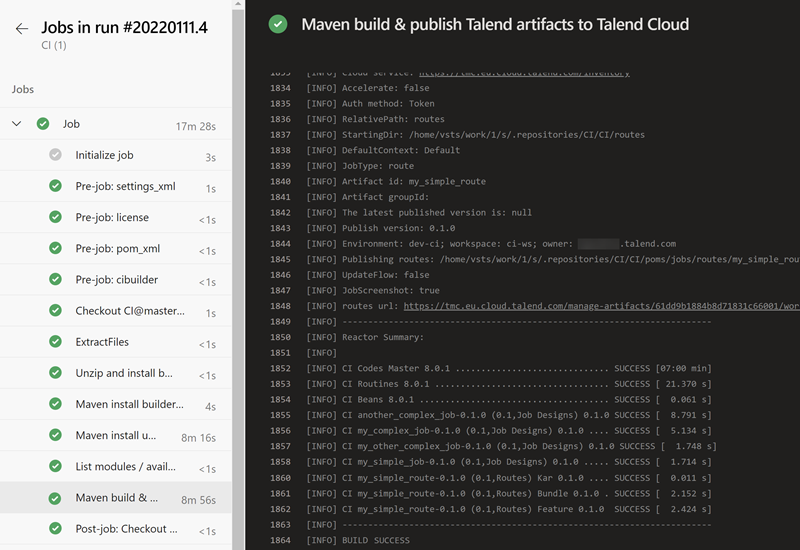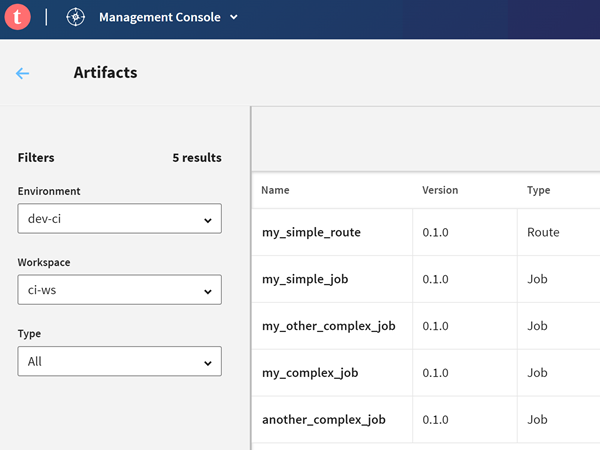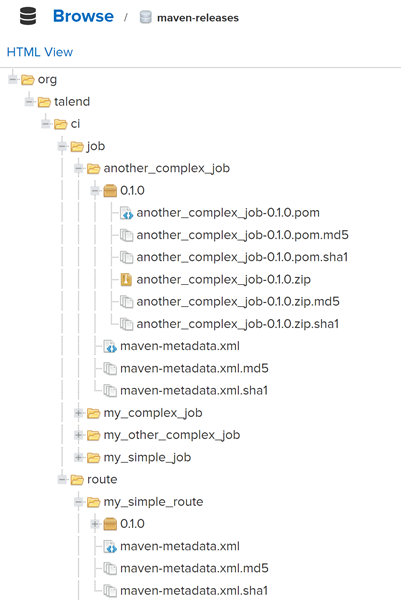Running the Azure DevOps pipeline
Procedure
- Go to .
- Either click Queue to queue another build with the same parameters or Edit to update the azure-pipelines.yml and run a build to take these changes into account.
Results

The pipeline is launched and your project is being processed according to the Maven phases that have been defined in your script. The best practice is to use the deploy phase in order to generate the source code, compile it, test it, package it and then deploy the packages.
You can see their results displayed:
- in the Azure DevOps pipeline detailed view: the detail of your results can be found
in the logs that you can display by clicking the Maven
step.Example where you can see the successful execution of the test named test_feature903:

- in Talend Management Console:
example of Job and Route artifacts with version 0.1.0 deployed
in the ci-workspace workspace of the
dev-ci environment:

The option to display Git information (author, commit ID, commit date) in Talend Management Console when publishing artifacts using Continuous Integration builds is available from version 8.0.1 onwards (available from R2022-01).
- in your Nexus web application or Artifactory: example of Job and Route artifacts
with version 0.1.0 deployed in the
maven-releases repository with an
org.talend.ci Group ID:

- in your Docker registry: example of Job and Route artifacts with version
0.1 pushed in a Docker image called
ci_image of a Docker registry called
ci_repo:

Did this page help you?
If you find any issues with this page or its content – a typo, a missing step, or a technical error – let us know how we can improve!
